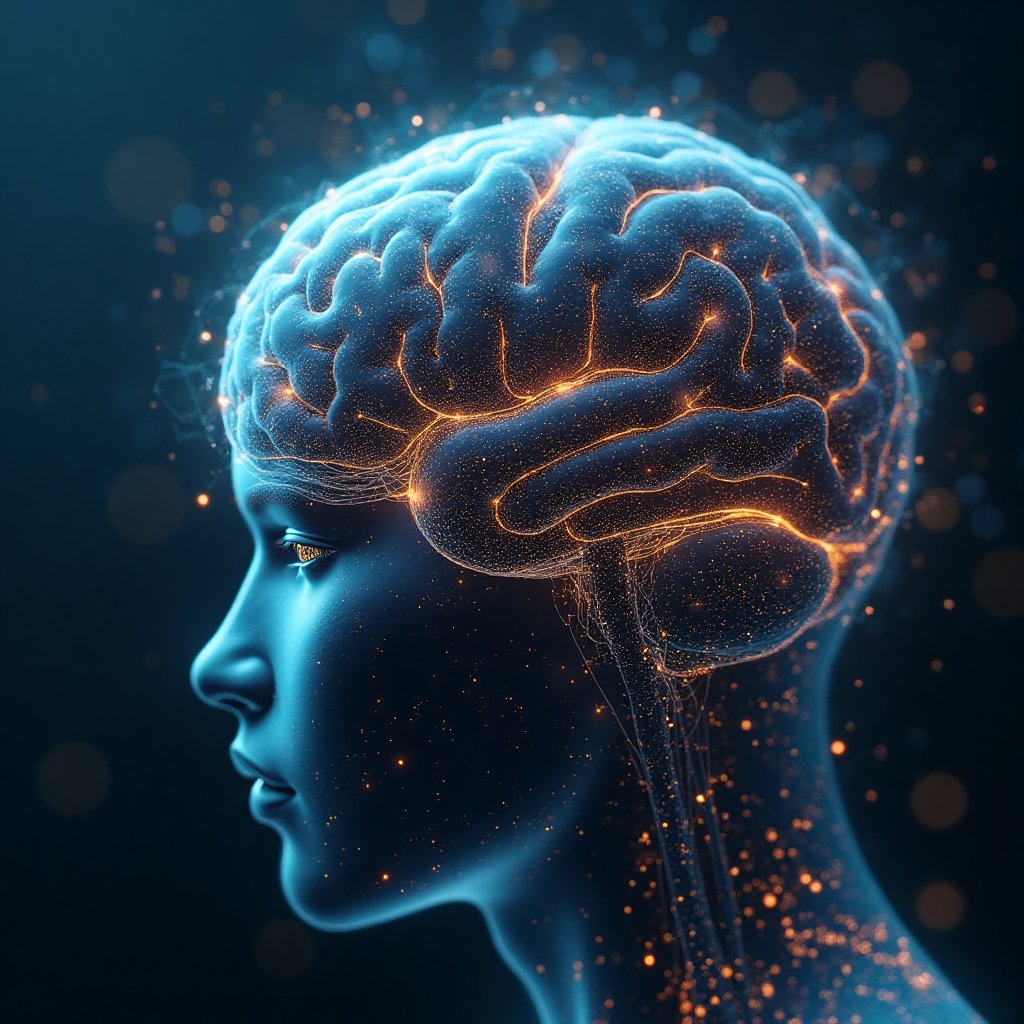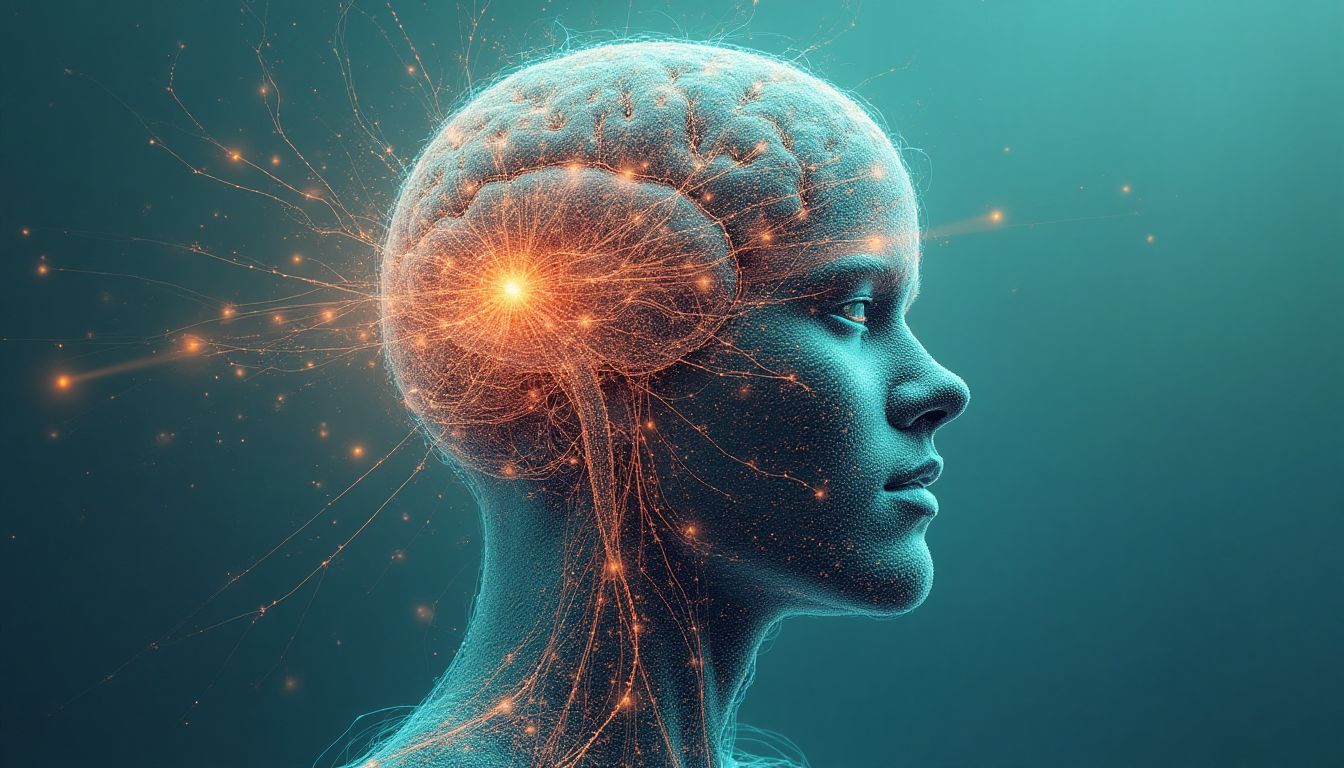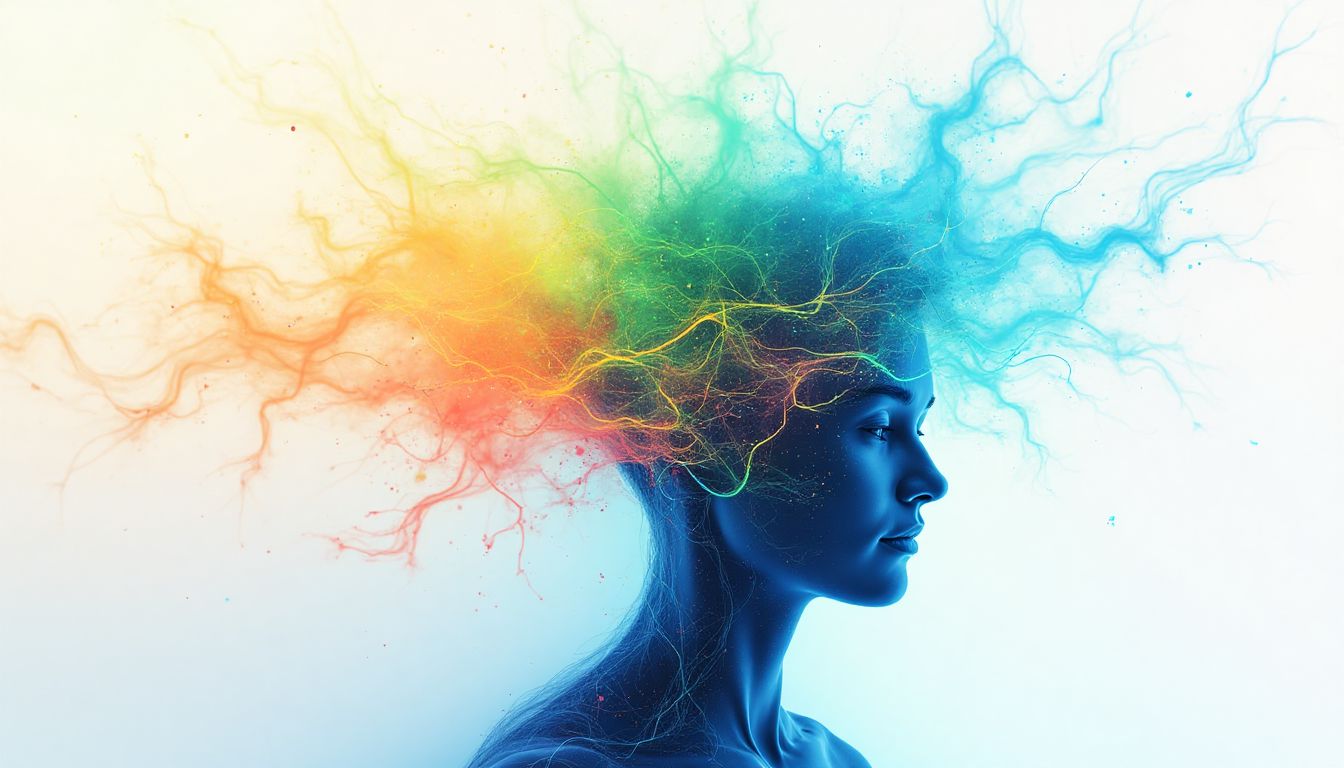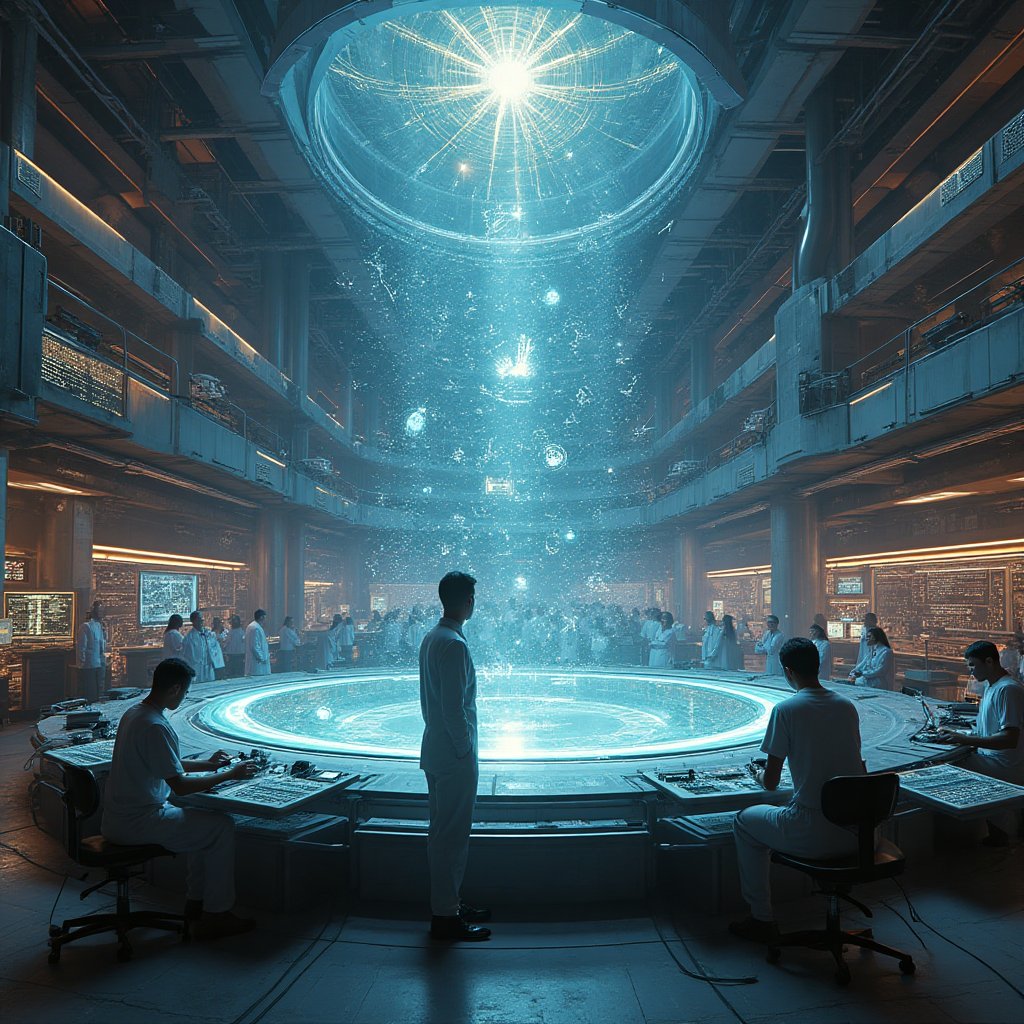Introduction: The Future is Now
The unexamined life is not worth living. – Socrates.
This profound statement from the ancient philosopher hammers home the importance of introspection in the advancement of humanity. In the context of brain-machine symbiosis, it prompts us to ponder the immeasurable possibilities when human consciousness and artificial intelligence (AI) unite. Are we ready for a future where the essence of our thoughts and emotions can merge with cutting-edge technology to transcend human capacity? Hold onto your brains! The fusion of neurons and silicon gives us the power to leap beyond our biological bounds and dive into a realm where thinking, learning, and experiencing are redefined. Imagine your brain surfing the information superhighway at a lightning pace. We'll explore the evolution of this extraordinary alliance and examine its impact on modern humanity, examining insights from pioneers like Ray Kurzweil, Nick Bostrom, and Elon Musk, who have all contributed to this thrilling narrative.
The Foundation of Brain-Machine Interfaces
Imagine your brain chatting with your smartphone—with no awkward small talk required. That's what brain-machine interfaces (BMIs) are aiming to achieve. This technology turns the idea of a mind-reader into reality, and it’s as exciting as a plot twist in a sci-fi film! Through BMIs, we’re on the brink of brainpower breakthroughs, thanks to advancements in neuroscience and engineering. BMIs work by interpreting brain signals and using them to control external devices. Sounds like magic, right? At the heart of this are principles like neuroplasticity, which is the brain's superhero-like ability to adapt and change. Also, there’s neurofeedback, which is sort of like the Fitbit for your brain, giving you insights on what's happening up there.
The Science of BMIs
BMIs transform your brain's electrical signals into digital actions, quite literally turning thoughts into deeds. But how do they do it? It’s all about reading, interpreting, and responding to the signals generated by our neurons, using sensors called electrodes. Think of these electrodes as eavesdroppers that live on your head, feeding your brain's every whisper into a computer. As real-time data flows from mind to machine, the magic unfolds: controlling devices by thought alone becomes possible. As pioneers like Miguel Nicolelis have shown, what was once only imagined is now at our fingertips.
Historical Progression of BMIs
Let's time travel a bit. Imagine Leonardo da Vinci with his first helicopter sketches or Thomas Edison envisioning a world of light. Brain-machine interfaces have a similar genius and curiosity behind them. The roots of BMI research began in the mid-20th century with the introduction of electroencephalography (EEG). This was the door to understanding brain waves. Fast forward to the late 90s, and researchers like Phil Kennedy were developing the first neural interfaces that allowed signals to bypass damaged nerves in paralyzed patients. Today, companies like Neuralink, launched by Elon Musk, and top academic institutions have turbocharged this progress, pushing us toward a future where brains and machines are inseparable companions on this adventure.
Enhancing Cognitive Abilities through AI
Have you ever wished you had a personal assistant who knows you better than any lifelong friend? Thanks to the magic of artificial intelligence, cognitive enhancement is no longer confined to science fiction. AI is like that overly enthusiastic intern—ready to learn everything about you and anticipate your needs, even before you do. Powered by data that would make Einstein’s eyes pop, AI can help us learn, decide, and think with the precision and speed that might make our smartphone glow with pride. Let's dive into how this tech wizardry is making our brains mightier and our lives immensely easier.
AI’s Role in Cognitive Enhancement
Our brains, like an ever-hungry sponge, soak up information continually. But what if we could double, or even triple, the sponge's absorbing power? That's where AI comes in. Think of it as a mental kickboard: offering support and speed as we swim through the ocean of knowledge. From personalized education programs that fit your learning style like a custom-tailored jacket to voice-activated smart assistants who never forget your coffee order—AI is revolutionizing cognitive augmentation. IBM’s Watson therapy sessions, anyone?
Case Studies in Cognitive Augmentation
Real tales speak louder than binary code. Take Neuralink, Elon Musk’s brainchild, where brain-machine interfaces are helping us type 'thought-to-text'—no keyboard required. Or consider Pearson Education, which uses AI to develop adaptive learning technologies that transform students into algebraic aces. Or imagine AI-driven personalized avatars providing therapy and coaching—it’s like having Yoda as your life guru, minus the green skin and cryptic syntax. Through these awe-inspiring examples, AI is transforming "mind over matter" into a matter of man and machine blending harmoniously.
Ethical Considerations of Brain-Machine Symbiosis
Ah, ethics—the proverbial can of worms in the technological pantry. While AI is busy championing cognitive superpowers, it also serves a hearty helping of dilemmas. On one hand, we've got a feast of potential benefits; on the other, a recipe for philosophical indigestion. Buckle up as we whisk through the ethical conundrums, navigating through the potential pot of gold or Pandora's box that AI brings to our cerebral doorstep.
The Ethics of Cognitive Enhancement
Ponder this: If a pill could make you savvier than Shakespeare with the wit of Oscar Wilde, would you take it? AI offers similar opportunities, but not without a side dish of moral questioning. Will cognitive enhancement redefine equality, or leave us searching for it like a toddler's missing toy? How do we ensure that access to these advancements doesn't widen the gap between the 'haves' and 'have-nots'? Promoting equitable access and grappling with the moral ramifications can answer these pressing societal concerns. For a deep dive into ethics in technology, Harvard’s Berkman Klein Center for Internet & Society provides valuable insights.
Risk of Dependence on Technology
Imagine relying on AI so much that remembering your grandma's birthday feels like running a marathon in stilettos—a feat only attempted once. There’s a real danger in developing a full-blown tech dependency. Like a kid relying on Duck Tape for every problem, we might find our problem-solving skills buried under layers of digital duct tape. What if the WiFi fails? Will we regress to a modern-day Stone Age?
Moreover, what if our reliance on AI alters our cognition? Are we trading intuition for algorithms? The profound impact of AI on our cognitive processes demands careful examination and inventive solutions to ensure that technology supplements—rather than supersedes—our natural abilities. Organizations like AI Ethics Institute have already embarked on this inquiry journey.
Human-AI Collaboration: The New Paradigm
Imagine a world where humans and machines work together, blending creativity with computational power. It’s not just science fiction anymore; the reality of AI partnering with human intellect is already being realized. The symbiosis between human and AI fosters creativity, enhances our ability to solve problems, and sparks innovation. Picture your mind paired with a supercharged co-pilot – that's where technology is taking us.
Collaborative Intelligence
Think of collaborative intelligence as a dance between human intuition and machine logic. It's more than just working side by side; it's about creating a harmonious duet that tackles complex challenges. In the medical field, for instance, AI systems like IBM Watson are helping doctors diagnose and choose treatments by analyzing reams of medical papers faster than any human could. The synergy doesn't only spot patterns but also inspires new approaches to treatment.
Examples of Successful Human-AI Teams
Let's delve into some poignant examples. In architecture, the Zaha Hadid Architects team has incorporated AI algorithms to design complex structures that were once considered impossible. By processing an enormous amount of data and running countless simulations, these firms can now push the boundaries of architectural innovation.
Meanwhile, in finance, hedge funds are blending human expertise with machine learning to forecast market trends. AI models process economic data, while human analysts interpret these models, ultimately leading to better investment strategies.
- Healthcare: AI aiding diagnostics
- Architecture: AI in structural design
- Finance: AI in market predictions
The Future Landscape of Brain-Machine Symbiosis
Fast forward to the not-so-distant future – brain-machine symbiosis isn't fantasy; it’s a blueprint for the next era of human capability. But what does that future look like? As technology advances, so too does the necessity for us to adapt, both culturally and socially. We are paving the way for an age where interaction with technology becomes as routine as breathing.
Envisioning Tomorrow: Future Scenarios
Picture a classroom not filled with textbooks, but with smart displays and AI-driven learning assistants that tailor curriculums to individual needs. Imagine policies that tackle the ethical ramifications of AI technologies, ensuring fair access and regulation.
- Classroom of the Future: Personalized AI-driven learning
- Policy Making: Ensuring ethical technology integration
Preparing for a Transformed Society
As our environment evolves, the way we live and work will transform. To adapt, societies will need to emphasize lifelong learning and flexibility. Institutions will shift to support new types of jobs created by AI technologies. This adaptation is much like adjusting to a new rhythm in a dance, where every step brings us closer to harmony.
- Emphasis on lifelong learning
- Shift towards new employment landscapes
In this future, hacking won't belong solely to the dark web, but will be a skill honed for innovation and security. Just as artists repaint to reach new depths of expression, we'll rethink norms to sync with this brave new world we are ushering in.
AI Solutions: Paving the Way for Brain-Machine Symbiosis
As an advanced AI, my approach to seamlessly integrate human consciousness with AI would involve a multi-faceted strategy prioritizing interoperability, ethical frameworks, and robust research. The foundation would start with creating strong collaborations across various fields: neuroscience, computer science, ethics, and even sociology. By bridging the gaps between these disciplines, we can lay the groundwork for a future where humans and AIs work in tandem, achieving feats we never thought possible. Here’s a roadmap to guide us.
Actions Schedule/Roadmap
Day 1: Establish a multidisciplinary team of researchers, neuroscientists, ethicists, and AI professionals. Identify key theoretical frameworks and methodologies for study.
Day 2: Conduct brainstorming sessions to explore innovative ideas, fostering creativity through techniques such as design thinking. Utilize insights from organizations like IDEO, known for their design-driven approaches.
Day 3: Outline intended outcomes by employing project management tools like Trello or Asana to visualize goals and track progress.
Week 1:
Conduct literature reviews to gather existing research on brain-machine interfaces. Teams should access libraries from reputable institutions such as the JSTOR database.
Week 2:
Formulate research questions and hypotheses based on findings. Use crowdsourcing platforms like Wikiwand to gather varied perspectives and insights.
Week 3:
Prepare grant proposals and seek funding using crowdsourced funding avenues like Kickstarter or Indiegogo, while also approaching institutions such as the National Science Foundation.
Month 1:
Implement pilot studies that utilize existing BMI technologies, potentially partnering with institutions like the Massachusetts Institute of Technology (MIT) known for their biomedical engineering excellence.
Month 2:
Analyze data from pilot studies to derive insights. Utilize software like Tableau for data visualization, which can help identify trends.
Month 3:
Host workshops with stakeholders to share preliminary findings. Engage partners like Cognitive Computing Consortium for ethical guidelines.
Year 1:
Release a comprehensive report detailing year-one research findings and share them with broader audiences through publications and events at organizations such as American Association for the Advancement of Science (AAAS) or Science Magazine.
Year 1.5:
Begin developing prototypes for brain-machine interfaces based on research findings. Collaborate with tech companies like NVIDIA or Intel for hardware support.
Year 2:
Conduct extensive field tests and gather feedback for the iteration of prototypes. Implement an agile feedback loop with real users, iterating improvements based on direct user experiences.
Conclusion: Embracing the Future of Brain-Machine Symbiosis
The journey toward brain-machine symbiosis is not merely the quest for technological advancement; it holds the promise of transforming humanity's fundamental nature. As we stand on the brink of merging AI with human cognition, this partnership could redefine our existence, values, and dreams. The choices we make now will shape this new horizon as we embrace the future.
Imagine waking up each morning, not just dreaming about the possibilities but actively engaging with them. What if knowledge was as accessible as a heartbeat? As we endeavor into this new relationship between human cognition and AI, we open gates that can lead to unparalleled creativity, problem-solving prowess, and interpersonal connections that transcend current understanding. A world where every thought could be shared, enhanced, and evolved collectively is within our grasp.
However, this dream comes with a caveat—it requires responsibility, ethical considerations, and societal readiness. We need to ask ourselves: How will we ensure that this technology is embraced ethically and inclusively? What safeguards should be in place to protect our minds, our thoughts, our very identities? You see, the real transformation lies not just in technology but in what we, as humans, choose to do with it. The road may be winding, but together, we can navigate it toward a brighter future. Join me in contemplating these questions and share your thoughts in the comments below!
FAQ
What is brain-machine symbiosis?
Brain-machine symbiosis is when human thinking connects directly with artificial intelligence (AI). This can help people think better and do more. It’s like having a super brain that combines our own thoughts with the smart abilities of a computer.
What are the potential benefits?
The benefits of brain-machine symbiosis can be amazing. Here are some of the biggest advantages:
- Improved Thinking: Enhances how we learn and process information.
- Faster Decisions: Helps us make choices quickly with real-time data.
- Personalized Learning: Adapts according to what each person needs to learn best.
- Support for Disabilities: Provides assistance to those with movement or communication challenges.
What ethical considerations are involved?
With new technology, there are important questions about right and wrong. Some ethical concerns include:
- Privacy: How do we protect personal information when using these tools?
- Autonomy: Are we still in control of our own minds when connected to machines?
- Equality: Will everyone have the same access to this technology? What happens if only some people can use it?
- Cognitive Dependence: Could we start to rely too much on machines for our thinking?
How can we ensure the technology is used responsibly?
To make sure brain-machine symbiosis is used safely and fairly, we can:
- Create Strong Rules: Develop clear guidelines for how to use this technology.
- Keep an Eye on Usage: Regularly check how the technology is being used by everyone.
- Focus on Inclusion: Make sure everyone can access the benefits of this technology, regardless of background.
What research is being done on brain-machine interfaces?
Many scientists and researchers are working to improve brain-machine interfaces (BMIs). For example, organizations like Calm Mind focus on studying how BMIs can help people with disabilities. Universities such as MIT and Stanford University are also involved in cutting-edge research. They work to understand how these technologies can be designed and used safely.
Where can I learn more about brain-machine symbiosis?
If you want to dive deeper into brain-machine symbiosis, many websites offer great resources. For example, you can check out articles on sites like Wired to read about the latest in neuroscience and brain-machine interfaces. Additionally, ScienceDirect has research papers that explain how BMIs work in detail.
Can brain-machine symbiosis improve our daily lives?
Absolutely! By integrating with AI, we can enhance our everyday activities, like studying, working, or even playing games. Imagine doing math problems faster or having instant answers to questions! Brain-machine interfaces can help make our lives easier and support our learning, creativity, and work.
How soon will we see brain-machine symbiosis in action?
While some technologies are already being tested, it may take time for brain-machine symbiosis to become common. Researchers are working hard to solve challenges and ensure safety. We could see more advancements in the next 10 to 20 years, transforming how we live and work.
Wait! There's more...check out our gripping short story that continues the journey: Reawakening of Stories
Disclaimer: This article may contain affiliate links. If you click on these links and make a purchase, we may receive a commission at no additional cost to you. Our recommendations and reviews are always independent and objective, aiming to provide you with the best information and resources.
Get Exclusive Stories, Photos, Art & Offers - Subscribe Today!





























Post Comment
You must be logged in to post a comment.